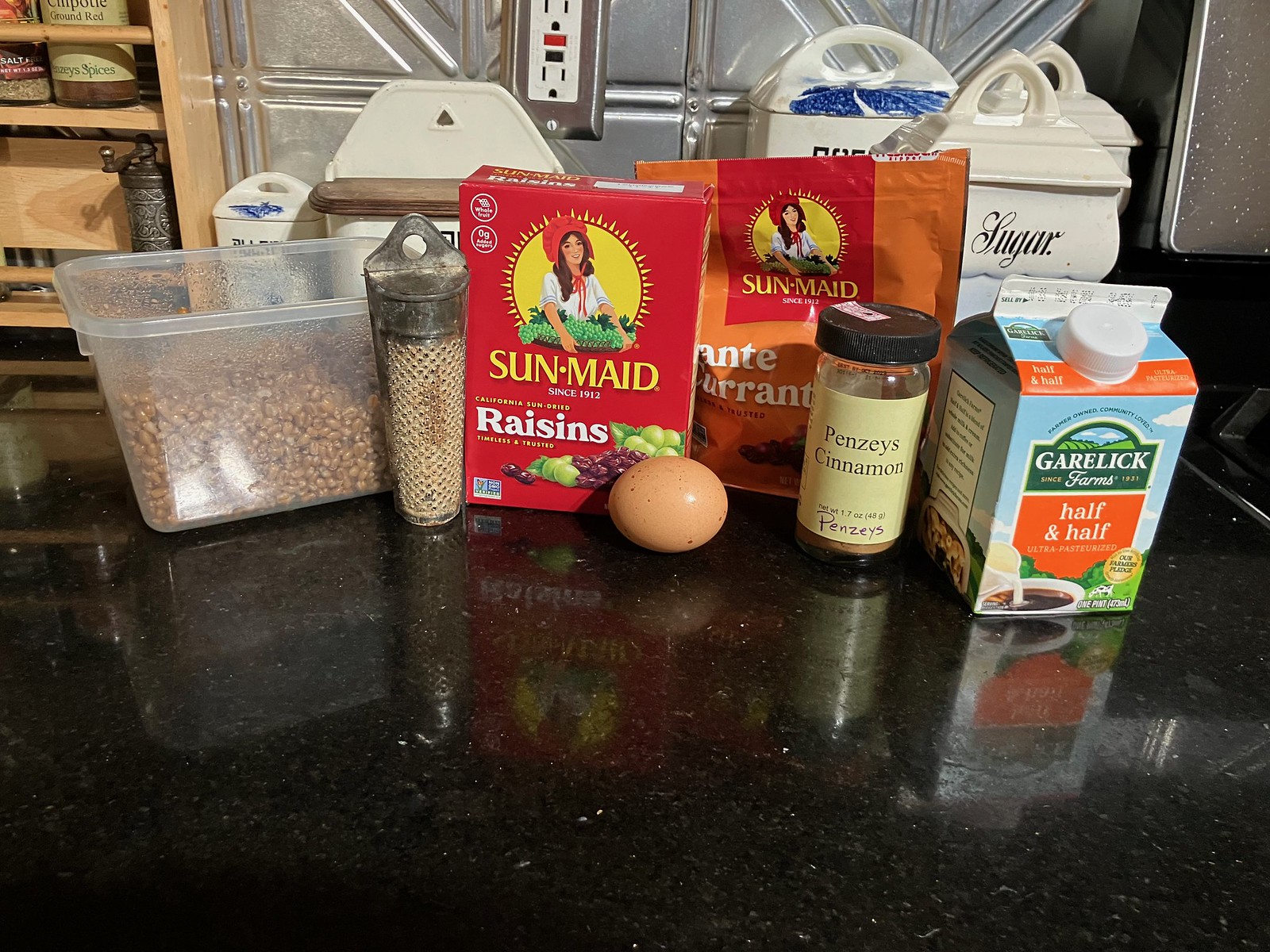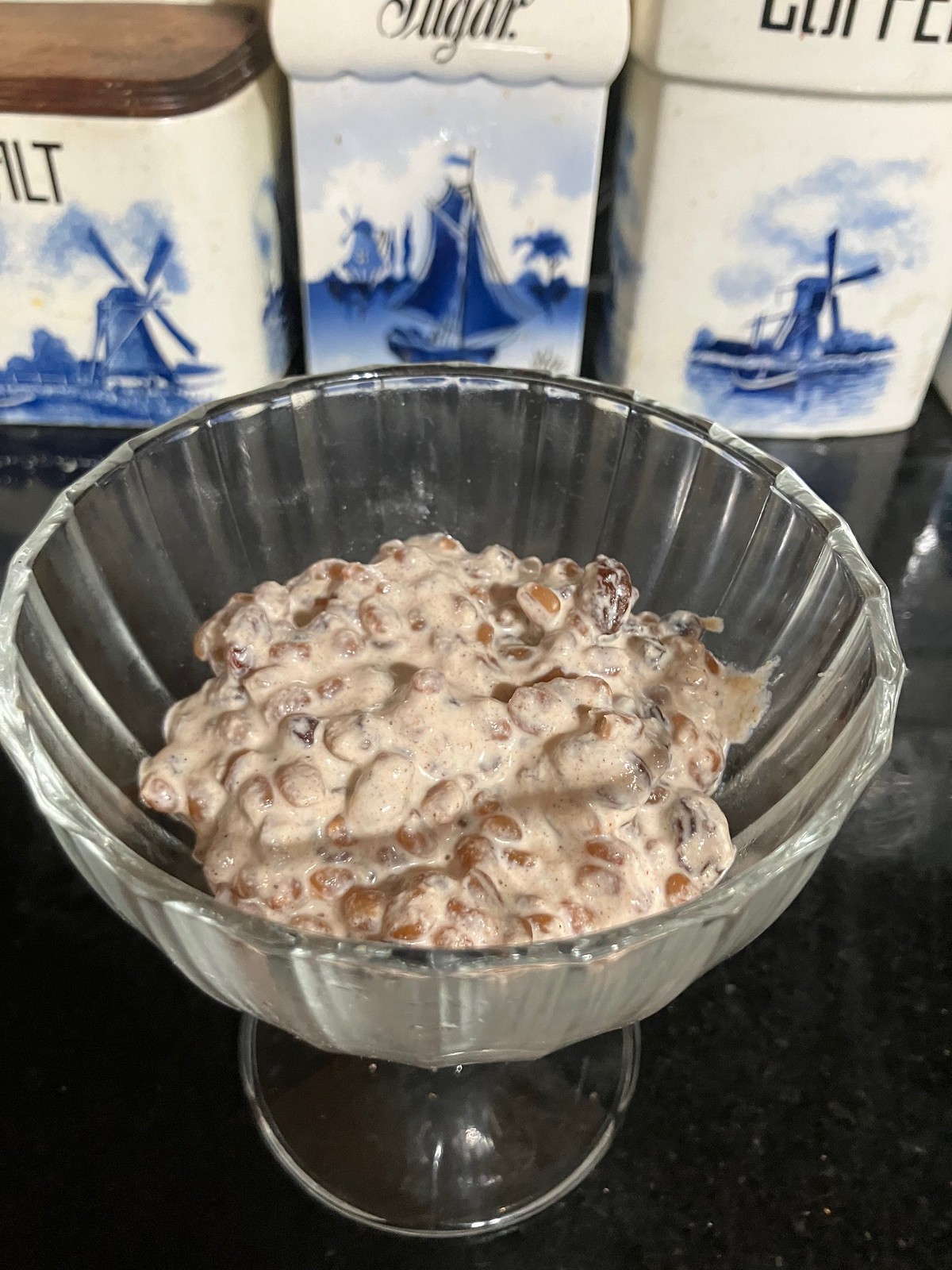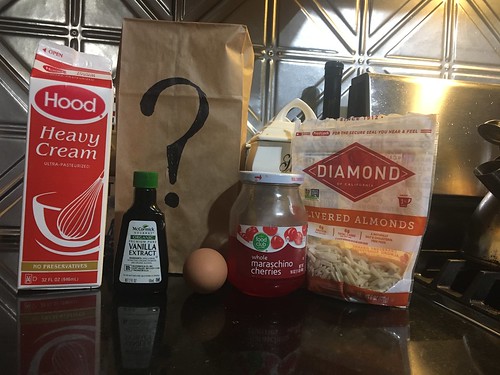Dear Constant Reader,
I’ve briefly left Fannie Farmer to cook with Mrs. Crocombe. The latest Victorian Way video from English Heritage has her cooking furmenty. I immediately perked up because we have a lot of wheat berries left over from Christmas Eve dinner when I made kutya. Kutya is a traditional Ukrainian Christmas Eve dessert made from wheat berries cooked in almond milk, then baked with dried fruit, nuts, ground poppy seeds, and honey. As we could only find the wheat berries in a five pound bag, I’ve got lots in the pantry.
What is furmenty? Also spelled “frumenty” (and apparently “furmity”), it’s a wheat-based dish that goes back to the middle ages. The medieval version was savory and served as a side-dish, usually with venison. Here’s a recipe from Forme of Cury, a 14th century manuscript:
FOR TO MAKE FURMENTY. Nym clene Wete and bray it in a morter wel that the holys gon al of and seyt yt til it breste and nym yt up. and lat it kele and nym fayre fresch broth and swete mylk of Almandys or swete mylk of kyne and temper yt al. and nym the yolkys of eyryn. boyle it a lityl and set yt adoun and messe yt forthe wyth fat venyson and fresh moton.
(To make furmenty. Take clean wheat and grind it in a morter well that the hulls are gone all off and simmer it until it bursts and take it up. And let it cool and take fair fresh broth and sweet milk of almonds or sweet milk of cows and mix it all. and take the yolks of eggs. Boyle it a little and set it down and serve it forth with fat venison and fresh mutton.)
The Victorian version is sweeter and served as a dessert. It’s very simple and it’s the sort of recipe you wouldn’t find in a cookbook, as Mrs. Crocombe says “nobody writes down the everyday”.
You need:
 Wheat berries, some form of dairy, spices, dried fruit, eggs, and sweetener.
Wheat berries, some form of dairy, spices, dried fruit, eggs, and sweetener.
Cook wheat berries. I rinsed mine and then simmered them in water for an hour until tender. You can also soak them overnight to reduce the cooking time or use a pressure cooker. Let cool. You can do this step a couple of days ahead of time.
When you’re ready to prepare the dish, first soak some raisins or currents (I used both!) in hot water or a bit of booze to plump them up. Cook the wheat with milk or cream (I split the difference and used half & half) until hot, then add in the drained dried fruit and spices (I used cinnamon and nutmeg, but you could use pumpkin pie spice).
Add beaten eggs. The instructions with the video recommended “cooking them off the heat if you like a just-cooked result, or on it if you prefer your eggs scrambled.” I do not like my eggs scrambled, but I wanted to make sure they were cooked, so I tempered them with a bit of the hot milk before adding to the pot and cooking for a bit.
Serve with sugar to taste. My taste is not very sweet, so I didn’t add any. Honey or agave would work too and probably blend better.
It was very good! Thick and creamy with some chew from the wheat and fruit. I used half the recipe from the video and got a *lot*. I probably could have cut it in half again and still had some leftovers. A couple of days later I added some chopped dried apricots and warmed the remaining frumenty up. Scratch had the brilliant idea of adding a little candied blood orange peel on top. I also had the last of it for breakfast and it was a nice change from my usual oatmeal.
If I made it again (and why not, it was pretty darn easy), I would add other dried fruits and some toasted nuts, maybe a touch of ginger with the spices. Oh, or maybe chopped crystalized ginger.
Here’s the recipe as I made it, adapted from English Heritage.
Furmenty a la Mrs. Crocombe
1/2 lb. wheat berries (about 1 cup)
2 cups half & half (or milk or cream)
2 ounces raisins
2 ounces currants
Brandy (or hot water or rum or wine or other spirits)
1 teaspoon cinnamon
1/2 teaspoon nutmeg
1 egg
Sugar (or honey or agave or maple syrup)
Cook wheat berries as directed until tender. I rinsed mine and simmered in 3 1/2 cups water for an hour. Drain. Reserve until ready to cook.
Pour brandy over dried fruit until just covered. Let soak.
Heat wheat and half & half together until hot. Don’t boil.
Drain fruit and add to mixture with spices. Blend very well to incorporate the spices.
Crack egg into a small bowl and beat well. Gradually add some of the hot liquid while beating further. Pour the tempered egg mixture into the pot and stir well until all is combined and hot. It will thicken quite a bit.
Sweeten to taste and serve warm.
 These writings and other creative projects are supported by my 19 Patrons. Thank you so much! To become a Patron, go to my Patreon page. Or you can just tip me if you liked this.
These writings and other creative projects are supported by my 19 Patrons. Thank you so much! To become a Patron, go to my Patreon page. Or you can just tip me if you liked this.



 These writings and other creative projects are supported by my 14 Patrons. Thank you so much! To become a Patron, go to
These writings and other creative projects are supported by my 14 Patrons. Thank you so much! To become a Patron, go to 




